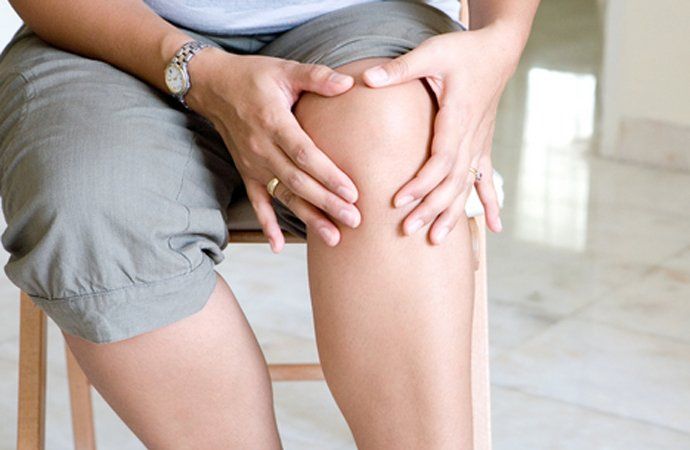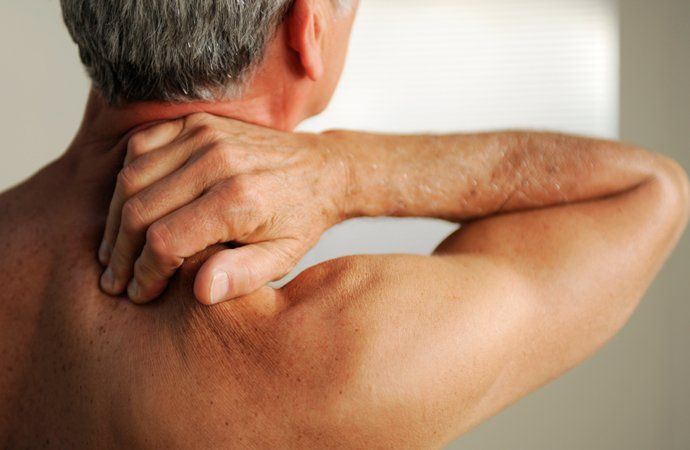Arthritis
Blog

09 May, 2013
What Is Osteoarthritis? Osteoarthritis is the most common type of arthritis. People usually have joint pain and stiffness. Unlike rheumatoid arthritis, it does not affect skin tissue, the lungs, eyes, or blood vessels. In osteoarthritis, cartilage-the hard, slippery tissue that protects the ends of bones where they meet to form a joint-wears away. The bones rub together, causing pain, swelling, and loss of motion. Over time, the joint also may lose its normal shape. Bone spurs-small deposits of bone-may grow on the edges of the joint. Also, bits of bone or cartilage can break off inside, causing more pain and damage. Where does osteoarthritis occur? Hands - Osteoarthritis of the hands seems to run in families. Women are more likely than men to have hand involvement. For most, it develops after menopause. Small, bony knobs may appear on the end joints (those closest to the nails) of the fingers. Fingers can become enlarged and gnarled, and may ache or be stiff and numb. The base of the thumb joint also is commonly affected. Knees - Symptoms include stiffness, swelling, and pain. This makes it hard to walk, climb, and get in and out of chairs and bathtubs. Hips - There is pain and stiffness of the joint itself. But sometimes pain is felt in the groin, inner thigh, buttocks, or even the knees. Osteoarthritis of the hip may limit moving and bending. This can make dressing or other daily activities a challenge. Spine - There is stiffness and pain in the neck or lower back. In some cases, arthritis-related changes in the spine can put pressure on the nerves where they exit the spinal column. This results in weakness, tingling, or numbness of the arms and legs. In severe cases, bladder and bowel function can be affected. Joints allow movement between the bones and absorb the shock from walking or other repetitive motion. Joints are made up of: Cartilage . A hard, slippery coating on the end of each bone. Joint capsule . A tough membrane that encloses all the bones and other joint parts. Synovium (sin-O-vee-um) . A thin membrane inside the joint capsule that secretes synovial fluid. Synovial fluid . A fluid that lubricates the joint and keeps the cartilage smooth and healthy. Ligaments, tendons, and muscles . Tissues that surround the bones and joints, a llowing the joints to bend and move. Ligaments are tough, cord-like tissues that connect one bone to another. Tendons are tough fibers that connect muscles to bones. Muscles are bundles of specialized cells that, when stimulated by nerves, either relax or contract to produce movement. Warning Signs of Osteoarthritis Pain and stiffness in a joint after getting out of bed or sitting for long. Swelling in one or more joints, especially those at the ends of the fingers (closest to the nail), thumbs, neck, lower back, knees, and hips. Crunching feeling or the sound of bone rubbing on bone Osteoarthritis may progress quickly, but in most people it develops gradually. It is relatively mild and interferes little with daily life in some people. Others have significant pain and disability. If you feel hot or your skin turns red, or if your joint pain is accompanied by a rash, fevers, or other symptoms, you probably do not have osteoarthritis. Check with your health provider about possible other causes, such as rheumatoid arthritis. Diagnosis A combination of the following methods are used to diagnose osteoarthritis: Clinical history - You will be asked when the condition started and how your symptoms have changed since. You will also describe any other medical problems you or your family may have, and any medications being taken. This helps your doctor make a diagnosis and understand the disease’s impact on you. Physical examination - Your doctor checks your strength, reflexes, and general health. She or he also examines bothersome joints and observes your ability to walk, bend, and carry out daily activities, such as dressing. X rays - X-rays will help determine the form of arthritis and how much damage there is, including cartilage loss, bone damage, and bone spurs. Magnetic resonance imaging - Magnetic resonance imaging (MRI) provides high-resolution computerized images of internal body tissues. It is used if there is pain, X-rays don’t show much, or there is damage to other joint tissues. Other tests - Your doctor may order blood tests to rule out other causes of symptoms. Fluid may also be drawn from the joint for microscopic examination to determine whether the pain is from a bacterial infection or uric acid crystals, indicating gout. Treatment Doctors often combine treatments to fit a patient’s needs, lifestyle, and health. Osteoarthritis treatment has four main goals: Improve joint function, keep a healthy body weight, control pain, and achieve a healthy lifestyle. Treatment plans can involve: Exercise - Research shows that exercise can improve mood and outlook, decrease pain, increase flexibility, strengthen the heart and improve blood flow, maintain weight, and promote general physical fitness. Your doctor and/or physical therapist can recommend the exercises best for you. Weight control - Weight loss can reduce stress on weight-bearing joints, limit further injury, and increase mobility. A healthy diet and regular exercise help reduce weight. A dietitian can help you develop healthy eating habits. Rest and relief from stress on joints - Learn to recognize the body’s signals, and know when to stop or slow down. Regularly scheduled rest prevents pain from overexertion. Proper sleep is important for managing arthritis pain. If you have trouble sleeping, relaxation techniques, stress reduction, and biofeedback can help. Nondrug pain relief and alternative therapies - You may find relief from: Heat or cold (or a combination of both). Heat-with warm towels, hot packs, or warm bath or shower-can increase blood flow and ease pain and stiffness. Cold packs (bags of ice or frozen vegetables wrapped in a towel) can reduce inflammation, relieving pain or soreness. Massage uses light stroking and/or kneading of the muscles to increase blood flow and warm the stressed joint. Complementary and alternative therapies-Some people have found relief from such therapies as acupuncture. A large study supported by the National Institute of Arthritis and Musculoskeletal and Skin Diseases (NIAMS) and the National Center for Complementary and Alternative Medicine (NCCAM) showed that acupuncture can relieve pain and improve function in knee osteoarthritis. Nutritional supplements-such as glucosamine and chondroitin sulfate have been reported to improve osteoarthritis symptoms in some people. Medications and Surgery When selecting medicines, your doctor will consider the intensity of pain, potential side effects of the medication, your medical history, and other medications you are taking. By working together, you and she or he can find the medication that best relieves your pain with the least risk of side effects. For many people, surgery helps relieve the pain and disability of osteoarthritis. You may have surgery to: remove loose pieces of bone and cartilage (arthroscopy) reposition bones (osteotomy) resurface bones (joint resurfacing). Surgeons also may replace affected joints with artificial ones called prostheses. These can last up to 15 years or longer. The surgeon chooses the prosthesis according to the patient’s weight, sex, age, activity level, and other medical conditions. After surgery and rehabilitation, the patient typically finds it easier to move and experiences a significant decrease in pain.

22 Apr, 2013
As many people begin to age they may start to feel some stiffness and pain in their joints. This typically happens around the ages of 45 to 50, and it’s referred to as arthritis. As one of the most common diseases there is, it happens to not only older people but can happen to anyone at any age. In recent years scientists have been learning a great deal about arthritis, which has helped us understand the condition, as well provide new treatments for it. Arthritis means joint (arthr) and itis (inflammation). It comes in multiple forms, can’t always be seen, and has a variety of symptoms, as well as treatments. The most common type of the disease is osteoarthritis, which follows an injury that has taken place at a joint. Osteoarthritis happens when you have had an injury, such as to your knee. Perhaps you played a sport or had an accident and had an injury. Years later you could end up with osteoarthritis as a result of the prior injury. It tends to happen to women more than men and usually as one gets older. There are some risk factors that you can focus on that can help you reduce your chances of this happening. For starters, maintaining a healthy weight is one of them. It is important to maintain healthy weight to keep osteoarthritis at bay. There are multiple treatments available, including hands-on manual therapy, therapeutic exercise, and aerobic exercise that can help and hinder your progress, as well as prescription and over-the-counter medication options. Options range from blocking pain to surgeries for the most severe cases. Gout is another common form of arthritis, which affects the big toe, as well as other joints. This happens because there is a build up of needle-like crystals that build up in the joints. For those with this condition, it is important that they avoid such foods as meat gravy, liver, beef, and anchovies, because they contain purines, which contribute to the crystal formation, and can bring on an attack of gout. Additionally, being overweight, drinking alcohol, and some medications can make it worse. A third type of arthritis is called rheumatoid arthritis, which can affect the whole body, rather than particular joints like the first two types. Rheumatoid arthritis happens when your immune system mistakenly attacks your joints. It creates swelling, pain, stiffness, and people lose the functionality of bones and joints, usually those in their feet and hands. It can also affect internal organs, and leave people feeling sick or tired. There are medications available to help control the pain and inflammation and physical therapy can help maintain or recovery strength and function. A doctor can perform tests to determine if you have arthritis and if so, what type you have. Meanwhile, researchers continue to explore the disease and new treatments. Genes, they have found, play a prominent role in many types. Additional risk factors are being explored, such as heavy metals in the environment, job-related exposures, and others. If you feel you have joint pain you can discuss it with one of our physical therapists or your doctor so that it can be addressed. It is better to catch it right away rather than let it go on. Conservative care is the first line of intervention in most cases and the sooner you start treatment the better.
Complete rehabilitation and hands on attention to our patients are the cornerstone building blocks of Agape Physical Therapy. Our physical therapy professionals are completely invested in restoring, improving, and reclaiming your movement to maximize your wellness and performance.
© 2024
All Rights Reserved | Agape Physical Therapy
© 2024
All Rights Reserved | Agape Physical Therapy
Made with ♥ by Vessel Digital Marketing
